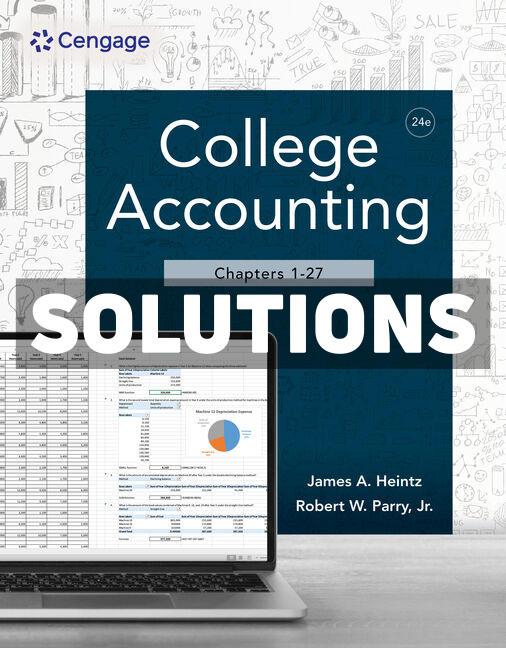

CHAPTER 1
INTRODUCTION
TO ACCOUNTING
DISCUSSION QUESTIONS
1. The purpose of accounting is to provide financial information about a business to individuals, agencies, and organizations.
2. Four user groups normally interested in financial information about a business are owners, managers, creditors, and government agencies.
3. The six major steps of the accounting process are listed below.
a. Analyzing is looking at events that have taken place and thinking about how these affect the business. This first step in the accounting process usually occurs when the business receives some type of information, such as a bill, that needs to be properly entered into the business’s records. This first step also involves deciding if the piece of information should result in an accounting entry or not
b. Recording is entering financial information into the accounting system.
c. Classifying is sorting and grouping like items together.
d. Summarizing is the aggregation of many similar events to provide information that is easy to understand.
e. Reporting is telling the results.
f. Interpreting is deciding the importance of information in the various reports.
4. Generally accepted accounting principles (GAAP) are the rules that businesses must follow when preparing financial statements.
5. FASB takes the following steps to develop an accounting standard:
1. The issue is placed on the Board’s agenda.
2. After researching the issue, a Preliminary Views document is issued.
3. Public hearings are held.
4. An Exposure Draft is issued.
5. An Accounting Standards Update is issued, which amends the FASB Accounting Standards Codification.
6. The International Accounting Standards Board.
7. The three types of ownership structures are listed below.
a. A sole proprietorship is owned by one person. The owner assumes all risks for the business. The advantage is that the owner can make all of the business decisions.
b. A partnership is owned by more than one person. Partners assume the risks for the business, and their assets may be taken to pay creditors. An advantage of a partnership is that owners share risks and decision making. A disadvantage is that partners may disagree about the best way to run the business.
c. A corporation is owned by stockholders. The owners’ risk is usually limited to their initial investment, but they typically have very little influence on business decisions.
8. Three types of businesses classified by activities are service businesses, merchandising businesses, and manufacturing businesses.
9 An accounting clerk performs accounting tasks such as recording, sorting, and filing accounting information.
10. Four areas of specialization for a public accountant are auditing, taxation, management advisory services, and forensic accounting
Auditing Auditing involves the application of standard review and testing procedures to be certain that proper accounting policies and practices have been followed. The purpose of the audit is to provide an independent opinion that the financial information about a business is fairly presented.
Taxation—The work of tax specialists includes offering advice on tax planning, preparing tax returns, and representing clients before governmental agencies, such as the Internal Revenue Service.
Management Advisory Services—Given the financial training and business experience of public accountants, many businesses seek their advice on a wide variety of managerial issues.
Forensic Accounting—Forensic accounting is a specialized field that combines fraud detection, fraud prevention, litigation support, expert witnessing, business valuations, and other investigative activities.
11. The Sarbanes-Oxley Act (SOX) was passed by Congress to help improve reporting practices of public companies. One important provision prohibits accounting firms from providing audit and management advisory services to the same company.
12. Six areas of specialization for a managerial accountant are accounting information systems, financial accounting, cost accounting, budgeting, tax accounting, and internal auditing.
Accounting Information Systems—Accountants in this area design and implement manual and computerized accounting systems.
Financial Accounting—Based on the accounting data prepared by the bookkeepers and accounting clerks, the accountant prepares various reports and financial statements.
Cost Accounting—The cost of producing specific products or providing services must be measured. Further analysis is also done to determine whether the products and services are produced in the most cost-effective manner.
Budgeting—In the budgeting process, accountants help management develop a financial plan for the future.
Tax Accounting—A firm may have its own accountants to focus on tax planning, preparation of tax returns, and dealing with the Internal Revenue Service and other governmental agencies.
Internal Auditing The main functions of an internal auditor are to review the operating and accounting control procedures adopted by management and to see that accurate and timely information is provided.
1. d Owners
2. b Managers
3. a Creditors
Whether the firm can pay its bills on time
Detailed, up-to-date information to measure business performance (and plan for future operations)
To determine taxes to be paid and whether other regulations are met 4. c Government agencies
Exercise 1-3A
2.
Exercise 1-1B
Users Information
Owners (present and future): firm’s profitability and current financial condition
Managers: detailed, up-to-date information about the business to measure performance
Creditors (present and future): firm’s profitability, debt outstanding, and assets that could be used to secure debt
Government agencies: firm’s profitability, cash flows, and overall financial condition
Exercise 1-2B
Letter Accounting Process
b Analyzing
f Recording
e Classifying
d Summarizing
a Reporting
c Interpreting
Definition
a. Telling the results
b. Looking at events that have taken place and thinking about how they affect the business
c. Deciding the importance of the various reports
d. Aggregating many similar events to provide information that is easy to understand
e. Sorting and grouping like items together
f. Entering financial information into the accounting system
Exercise 1-3B
1. Party Planner Service
2. Toy Factory Manufacturing
3. Sporting Goods Store Merchandising
4. Movie Theatre Service
5. Pharmacy Merchandising
6. Automobile Factory Manufacturing
7. Child Day Care Service
8. Grocery Store Merchandising
Ethics in Actions
Student answers may include:
The AICPA code of conduct for CPAs includes carrying out responsibilities as professionals using moral judgment, acting in a way that best serves the public, and performing professional responsibilities with the highest sense of integrity. The AICPA code of conduct requires that all CPAs act with integrity, objectivity, due care, and competence; fully disclose of any conflicts of interest; maintain client confidentiality; and serve the public interest when providing financial services.
The IMA statement of Ethical Professional Practice for CMAs states members have the responsibility to comply with and uphold the standards of competence, confidentiality, integrity, and credibility.
Both certifications have very similar ethical standards with both mentioning confidentiality and integrity as part of their ethics code.
Accounting with QuickBooks Online Chapter 3 Solutions Manual
Learning Objectives
After students have completed this chapter, they will be able to do the following:
1. Modify company settings
2. Modify the chart of accounts
3. Add customers 4. Add vendors
5. Add employees
Chart of Accounts (Account List)

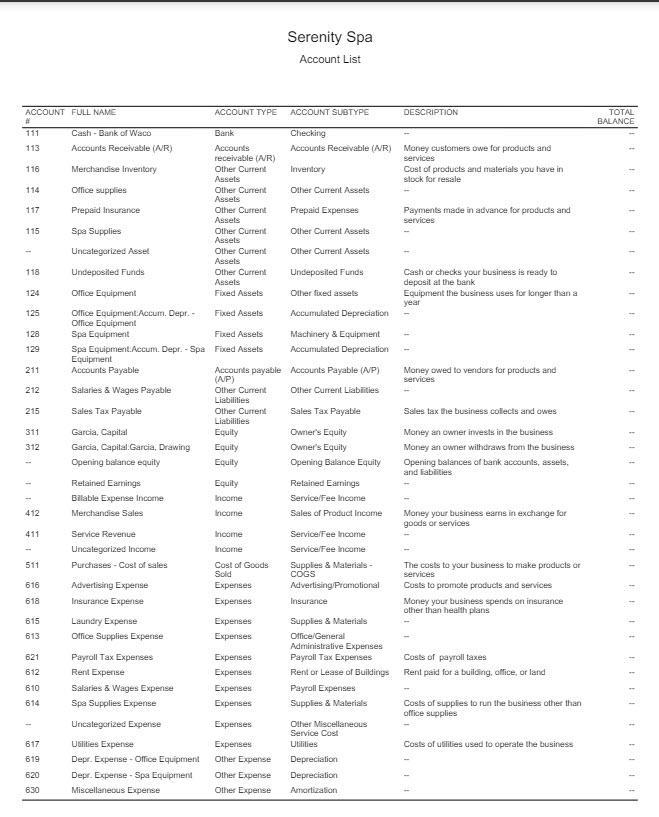
Instructor Notes:
1. The students should have Account 111 Cash – Bank of Waco for their Bank Account – Checking.
2. 125 Accum. Depr. – Office Equipment should be a sub-account of 124 Office Equipment
3. 129 Accum. Depr. – Spa Equipment should be a sub-account of 128 Spa Equipment.
4. The following QuickBooks Online Accounts will not be deactivated:
• Uncategorized Asset
• Opening balance equity
• Retained Earnings
• Uncategorized Income
• Uncategorized Expense
• Undeposited Funds
Customer List

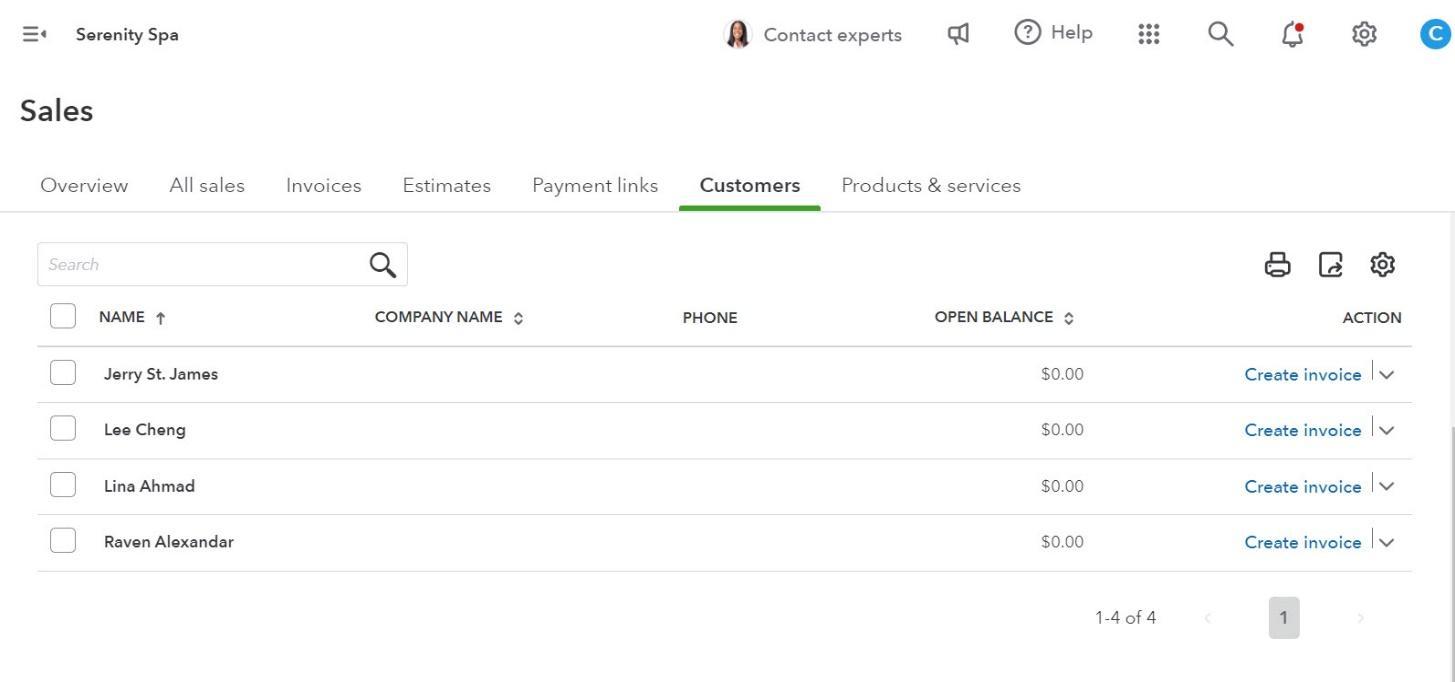

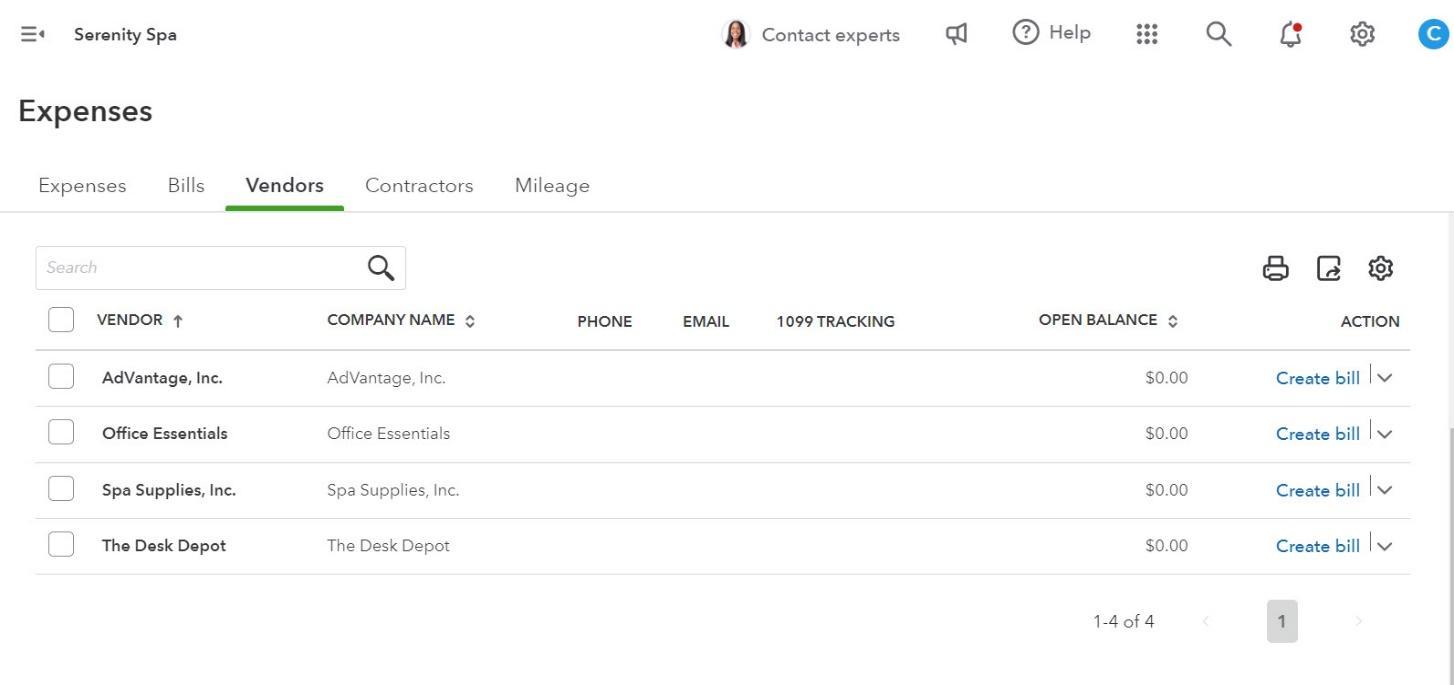

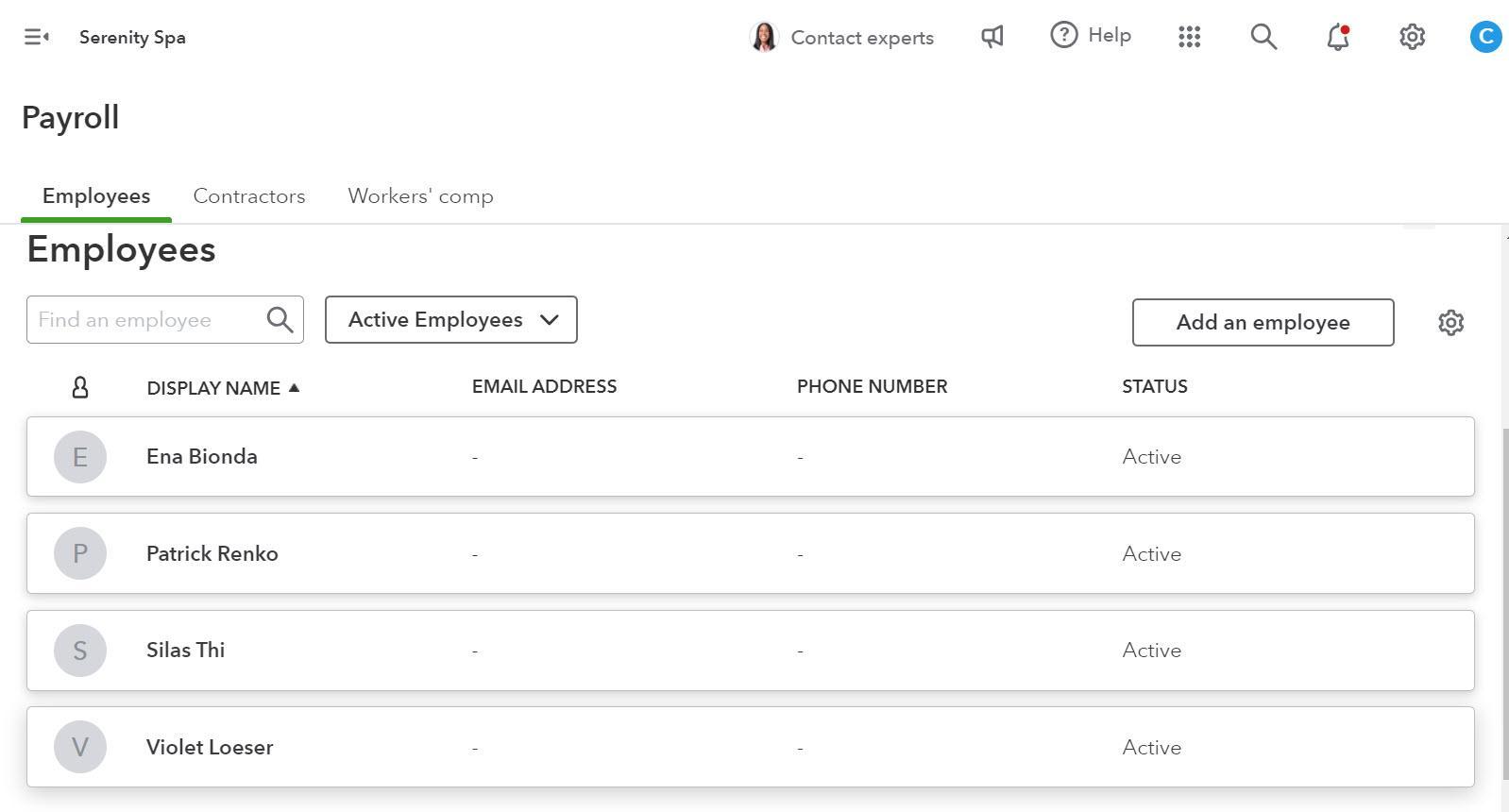
Instructor Manual: Heintz/Parry, College Accounting, 24th Edition, 9780357989388; Chapter 1: Introduction to Accounting
PURPOSE AND PERSPECTIVE OF THE CHAPTER
The purpose of this chapter is to provide background information on what accounting is, the general process of accounting, and types of ownership structures, business activities, and accounting career opportunities.
CHAPTER OBJECTIVES
The following objectives are addressed in this chapter:
Obj. 1 Describe the purpose of accounting.
Obj. 2 Describe the accounting process.
Obj. 3 Compare GAAP and IFRS Accounting Standards.
Obj. 4 Define three types of business ownership structures.
Obj. 5 Classify different types of businesses by activities.
Obj. 6 Identify career opportunities in accounting.
WHAT'S NEW IN THIS CHAPTER
See the Transition Guide for a list of improvements in this chapter from the previous edition.
CHAPTER OUTLINE
The following outline organizes activities (including any existing discussion questions in PowerPoints or other supplements) and assessments by chapter (and therefore by topic), so that you can see how all the content relates to the topics covered in the text.
I. The Purpose of Accounting (Learning Objective 1, PPT Slides 3–5, BUSPROG: Analytic, AICPA: FN-Measurement)
a. Provides financial information about the current operations and financial condition of a business to individuals, agencies, and organizations Information.
b. Users of Accounting Information (See Figure 1-1)
• Owners
• Managers
• Creditors
• Government agencies
II. The Accounting Process (Learning Objective 2, PPT Slides 6–8, BUSPROG: Analytic, AICPA: FN-Measurement)
a. Accounting is a system of gathering financial information about a business and reporting this information to users.
b. The six major steps of the accounting process (See Figure 1-2) are as follows:
• Analyzing
(1) Looking at events that have taken place.
(2) Thinking about how these events have affected the business.
• Recording
(1) Entering financial information about events into an accounting system.
(2) Financial information can be entered manually; however, most businesses use accounting software.
• Classifying
(1) Sorting and grouping similar items together.
• Summarizing
(1) Aggregation of many similar events to provide information that is easy to understand.
• Reporting
(1) Revealing results.
• Interpreting
(1) Deciding the meaning and importance of reported information.
(2) Uses ratio analysis to explain how pieces of information relate to one another.
III. Accounting Standards (Learning Objective 3, PPT Slides 9–11, BUSPROG: Analytic, AICPA: FN-Measurement)
a. Generally accepted accounting principles are the procedures and guidelines developed by the Financial Accounting Standards Board to be followed in the accounting and reporting process.
b. The Financial Accounting Standards Board (FASB) is a private standardsetting body.
Instructor Manual: Heintz/Parry, College Accounting, 24th Edition, 9780357989388; Chapter 1: Introduction to Accounting
c. Provides concepts and guidelines to be followed during the accounting process.
d. The five steps for adopting a standard are as follows:
• The issue is placed on FASB’s agenda.
• FASB issues a Preliminary Views document.
• Public hearings are held around the country.
• An Exposure Draft is issued by FASB.
• A final Accounting Standards Update is issued that amends the Financial Accounting Standards Board Accounting Standards Codification.
IV. Three Types of Ownership Structures (Learning Objective 4, PPT Slides 12–16, BUSPROG: Analytic, AICPA: FN-Measurement)
a. See Figure 1-3 Types of Ownership Structures—Advantages and Disadvantages.
b. Sole Proprietorship
• The business is owned by one person.
• The owner assumes all the risks for the business personally.
• The owner makes all of the business decisions.
c. Partnership
• The business is owned by more than one person.
• Partners assume all the risks for the business personally.
• Owners share risks and decision making.
• Partners may disagree about the way the business should be run.
d. Corporation
• The business is owned by stockholders.
• Stockholders have limited risk.
• Stockholders may have little influence on business decisions.
V. Types of Businesses (Learning Objective 5, PPT Slides 17–21, BUSPROG: Analytic, AICPA: FN-Measurement)
a. Figure 1-4 lists examples of types of businesses organized by activities.
• A service business provides a service to customers, businesses, and governments.
• A merchandising business buys a product from another business to sell to customers.
• A manufacturing business makes a product to sell.
VI. Career Opportunities in Accounting (Learning Objective 6, PPT Slides 22–40, BUSPROG: Analytic, AICPA: FN-Measurement)
a. Accounting Clerks
• Record, sort, and file accounting information.
• Often specialize in one area of accounting.
• Require at least one year of accounting education.
b. Bookkeepers
• Supervise the work of accounting clerks, help with daily accounting work, and summarize accounting information.
• In small-to-medium-sized businesses, may also help interpret accounting information.
• Require one to two years of accounting education and some experience as an accounting clerk.
• Available certifications have eligibility, examination, and continuing education requirements.
(1) Certified Public Bookkeeper (CPB), offered by the National Association of Certified Public Bookkeepers (NACPB)
(2) Certified Bookkeeper (CB), granted by the American Institute of Professional Bookkeepers (AIPB)
c. Para-accountants
• Provide accounting, auditing, or tax services under the direct supervision of an accountant.
• Generally require a two-year degree or significant accounting and bookkeeping experience.
d. Accountants
• Design the accounting information system and focus on analyzing and interpreting information.
• Enter the field with a college degree (or master’s degree) in accounting since many states require 150 credit hours to sit for the CPA exam.
• Accountants are employed in (see Figure 1-5 Accounting Careers): (1) public accounting (2) private (managerial) accounting (3) governmental accounting (4) not-for-profit accounting
• Can achieve professional status as a Certified Public Accountant (CPA) and work for major accounting firms.
• Services offered to other businesses by public accountants are as follows:
(1) Auditing. Reviewing companies’ books to ensure correct policies and practices have been followed.
(2) Taxation. Tax specialists offer advice on tax planning, prepare tax returns, and represent clients before governmental agencies.
(3) Management Advisory Services. Offer advice to other businesses on a wide variety of managerial issues.
(4) Forensic Accounting. Includes fraud detection, fraud prevention and other investigating techniques.
• Sarbanes-Oxley Act (SOX) was passed by Congress in 2002 to help improve reporting practices of public companies.
(1) The Public Company Accounting Oversight Board (PCAOB) enforces SOX rules and regulations.
(2) For the largest companies, external auditors are required to report on the effectiveness of a public company’s accounting procedures.
(3) Auditing firms are prohibited from offering many nonaudit services to their public audit clients.
(4) Auditing firms must rotate lead audit partners off audit engagements every five years.
(5) The CEO and CFO must personally certify that the financial statements are accurate.
• A controller oversees entire accounting process and serves as principal accounting officer of the company.
• Services offered by private accountants are as follows:
(1) Accounting Information Services. Design and implement manual and computerized accounting systems.
(2) Financial Accounting. Prepare various reports and financial statements.
(3) Cost Accounting. Record the cost of producing items or providing services. Analyze the production costs for efficiency.
(4) Budgeting. Help managers develop a financial plan.
(5) Tax Accounting. Internal tax accountant focuses on tax planning, prepares tax returns, and deals with governmental agencies.
(6) Internal Auditing. Internal accountants review the records to ensure control procedures are adequate and have been followed.
(7) Certified Managerial Accountant (CMA). A private accountant who gains professional status by passing a
Instructor Manual: Heintz/Parry, College Accounting, 24th Edition, 9780357989388; Chapter 1: Introduction to Accounting
uniform examination offered by the Institute of Management Accountants.
(8) Certified Internal Auditor (CIA). A private accountant who gains professional status by passing a uniform examination offered by the Institute of Internal Auditors.
• Governmental and not-for-profit accounting.
(1) Accounting for states, cities, schools, churches, and hospitals.
(2) Rules are somewhat different for governmental companies and not-for-profit companies.
• CPA Evolution. A joint initiative by the National Association of State Boards of Accountancy (NASBA) and the American Institute of Certified Public Accountants (AICPA).
e. Career Opportunities
• Job growth will be greater in some industry areas than in others.
(1) Figure 1-6 Expected Number of New Jobs by Industry, 2021–2031
(2) Figure 1-7 Expected Demand
(3) Figure 1-8 Accounting Positions Natural Average Salary According to Salary.com, 2022
[return to top]
ADDITIONAL RESOURCES
LEARNING ACTIVITIES
1. Have students identify several businesses in your community that are organized as sole proprietorships, partnerships, and corporations.
2. Have students identify several service, merchandising, and manufacturing businesses in your community.
3. Have students identify several organizations in your community that are considered not-for-profit entities.
CRITICAL THINKING ACTIVITIES
1. Have students think of a business transaction, such as buying a pair of jeans at the mall. Have students explain how the transaction would affect all phases of the accounting process.
TEN QUESTIONS YOUR STUDENTS WILL ALWAYS ASK
1. How much math is involved in accounting?
2. Can’t computers do all this now?
3. Why is accounting required for my major?
4. Does one person perform all of the steps in the accounting process?
5. What do you mean by “liability”?
6. In a corporation, what is meant by risk being limited to initial investment?
7. Can one partner obligate any other partners, even if they did not know what the original partner did?
8. How do you classify a grocery delivery business?
9. What are the requirements for becoming a CPA in our state?
10. Is practicing public accounting or private accounting better for my career? [return to top]
